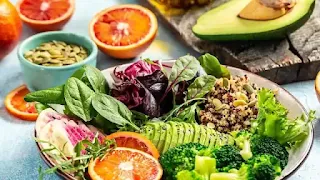Pranayama, or yogic breathing, is the conscious regulation of breath to influence the flow of prana (life force). When practiced correctly, it stabilizes the mind, improves health, and prepares one for deeper states of meditation. However, these practices must be learned carefully, as improper techniques can be harmful without proper guidance.
While manual pranayama exercises are optional for those already engaged in deep sadhana or meditation, they can be highly beneficial for healing specific physical and mental conditions. The following techniques are described for both practitioners and those who may naturally experience these breathing patterns during meditation but do not fully understand their significance.
Precautions:
• Do not hold your breath if suffering from high blood pressure.
• Inhalation, exhalation, and breath retention should always remain gentle, slow, and comfortable.
• Excess strain can cause harm.
1. First Stage: One may experience perspiration or a warming sensation due to increased sympathetic nervous system activity. Rubbing sweat back into the body helps stabilize nerves, muscles, and the entire system.
2. Second Stage: Trembling, quivering, twitching, or sensations in the spine may occur. These are signs of stress release and the body reorganizing itself for more coordinated functioning.
3. Third Stage: The mind becomes steady, and the breath automatically slows or stops.
At the beginning of pranayama practice, adding milk and ghee to the diet is recommended. One should avoid eating at least one hour before practice. Food should be aligned with one's Ayurvedic constitution.
General Benefits:
Pranayama helps remove hiccups, cough, headaches (including migraines), eye and ear discomfort, respiratory disorders, digestive imbalances (indigestion, hyperacidity), mucus, excess fat, and obesity. It also balances the three doshas described in Ayurvedic texts.
According to the Yoga-Shikha Upanishad, pranayama forms a part of the fourfold path of yoga: mantra, hatha (including pranayama), laya, and raja yoga. All stages refine the breath until it becomes naturally still.
As mantra sadhana deepens, hatha yoga and pranayama begin to occur spontaneously. Pranayama unites the upward and downward vital breaths through the yogic channels (nadis), causing them to merge into the sushumna, the central spiritual channel within the spine. This leads to the natural cessation of breath in deeper spiritual states such as laya yoga.
Ultimately, when the stillness of breath becomes permanent—remaining calm even during activity—one enters raja yoga.
Although pranayama can be naturally achieved through meditation, manual methods are still recommended when healing is needed, according to Ayurvedic practitioners.
1. Suryabheda Pranayama (Solar Breathing)
Method:
a) Sit in Siddhasana or Siddha Yoni Asana. Place the right thumb beside the right nostril, the index and middle fingers on the third eye, and the ring finger on the left nostril.
b) Inhale slowly through the right nostril, allowing the belly to expand comfortably.
c) Close the right nostril and exhale slowly through the left. This completes one round.
d) Repeat for 10 rounds initially, increasing gradually.
Benefits:
This practice strengthens energy, stimulates left-brain activity, increases sympathetic nervous system functioning, and balances the hemispheres of the brain. It balances pitta and kapha doshas, removes dullness, slows aging, and promotes longevity by influencing pituitary and endocrine function.
2. Chandrabheda Pranayama (Lunar Breathing)
This is the reverse of Suryabheda—inhale through the left nostril and exhale through the right. It cools the system and benefits pitta types. Alternatively, Shitali pranayama may be practiced.
3. Bhastrika Kumbhaka (Bellows Breath)
This technique forcefully moves air in and out of the lungs with equal intensity while keeping the body steady.
Method:
a) Sit in Lotus or Siddhasana. Place hands on the knees.
b) Inhale deeply.
c) Exhale forcefully through the nose without straining.
d) Immediately inhale forcefully.
e) Practice 10 cycles (one round), rest, then complete three rounds.
Benefits:
It energizes the body, removes mucus, stimulates the lungs and circulation, oxygenates the blood, massages internal organs, and strengthens resistance to respiratory conditions like asthma, bronchitis, and sinusitis. It also improves digestion, eases mental tension, and activates kundalini energy.
4. Kapalbhati Kumbhaka (Frontal Brain Cleansing)
Kapalbhati invigorates the brain and activates subtle centers of awareness.
Method:
a) Sit comfortably in Siddhasana or Siddha Yoni Asana.
b) Inhale, then perform 50 rapid exhalations, emphasizing exhalation.
c) Inhale deeply and exhale through pursed lips.
d) Complete 3 rounds.
Precautions:
Avoid this practice if suffering from high/low blood pressure, lung disorders, or eye/ear diseases. Reduce force if dizziness occurs.
Benefits:
It expels toxins, clears sinuses, cools the eyes, strengthens abdominal organs, improves digestion, rejuvenates nerves, and slows the aging process.
5. Bhramari Kumbhaka (Humming Bee Breath)
Best practiced early morning or late at night, after asanas and before meditation.
Method:
a) Sit in Siddhasana and relax with eyes closed.
b) Inhale deeply.
c) Close the ears with the fingers.
d) Exhale while making a soft humming sound.
e) Repeat 10–20 rounds.
Alternative:
Close ears with thumbs, eyes with index fingers, nostrils with middle fingers, and mouth with ring and little fingers. Hold the breath comfortably while remaining aware of inner vibrations.
Benefits:
It enhances intuition, calms the mind, relieves tension, reduces anger and anxiety, and aids in insomnia.
Disclaimer
This article is for educational purposes only. It is not a substitute for professional medical advice. Always consult a qualified healthcare provider for diagnosis or treatment.
Stay healthy, stay safe...

















.jpg)



